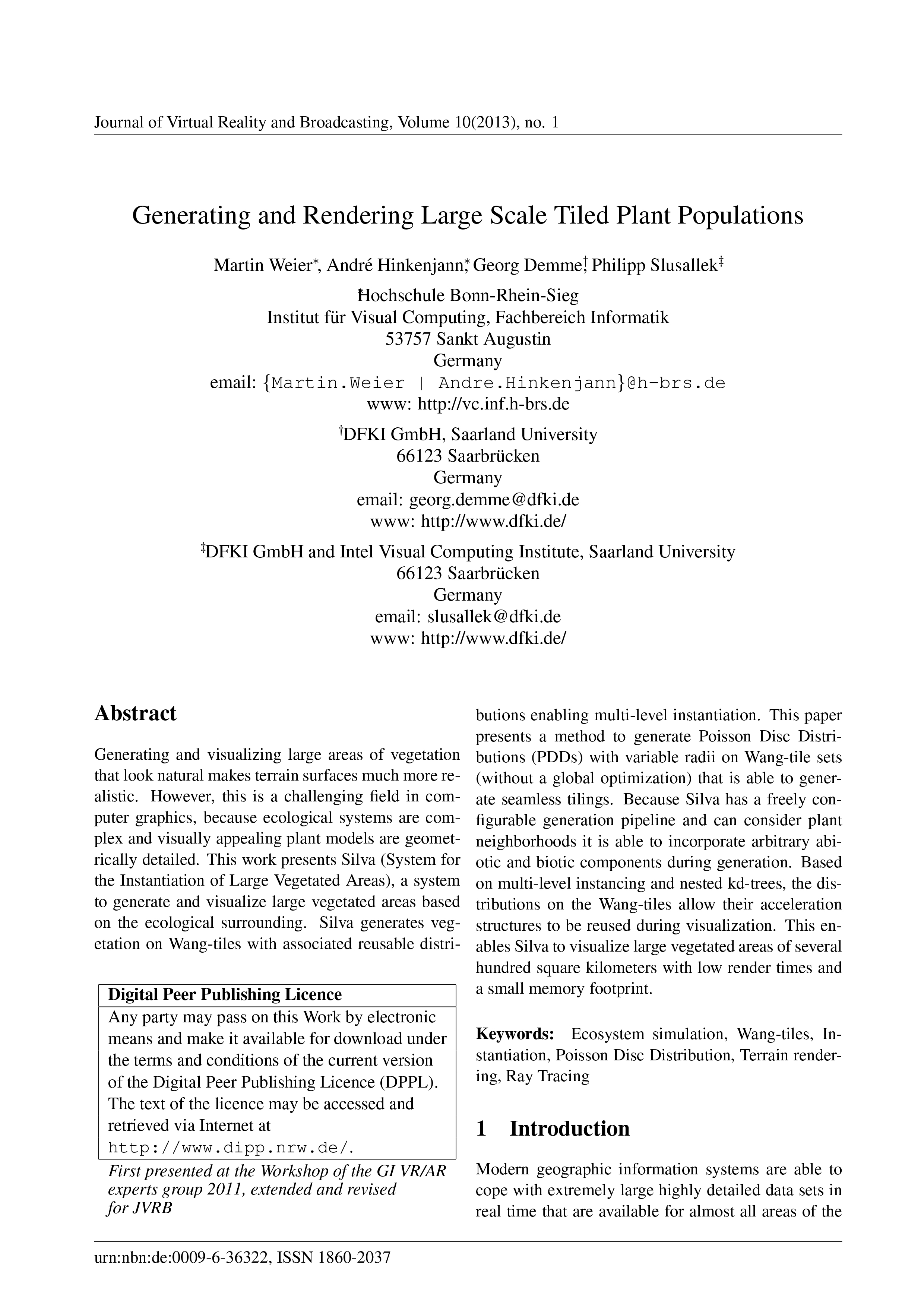Generating and Rendering Large Scale Tiled Plant Populations
DOI:
https://doi.org/10.20385/1860-2037/10.2013.1Keywords:
Ecosystem simulation, Instantiation, Poisson Disc Distribution, Ray Tracing, Terrain rendering, Wang-tilesAbstract
Generating and visualizing large areas of vegetation that look natural makes terrain surfaces much more realistic. However, this is a challenging field in computer graphics, because ecological systems are complex and visually appealing plant models are geometrically detailed. This work presents Silva (System for the Instantiation of Large Vegetated Areas), a system to generate and visualize large vegetated areas based on the ecological surrounding. Silva generates vegetation on Wang-tiles with associated reusable distributions enabling multi-level instantiation. This paper presents a method to generate Poisson Disc Distributions (PDDs) with variable radii on Wang-tile sets (without a global optimization) that is able to generate seamless tilings. Because Silva has a freely configurable generation pipeline and can consider plant neighborhoods it is able to incorporate arbitrary abiotic and biotic components during generation. Based on multi-level instancing and nested kd-trees, the distributions on the Wang-tiles allow their acceleration structures to be reused during visualization. This enables Silva to visualize large vegetated areas of several hundred square kilometers with low render times and a small memory footprint.
Additional Files
Published
2013-07-29
Issue
Section
GI VR/AR 2011





